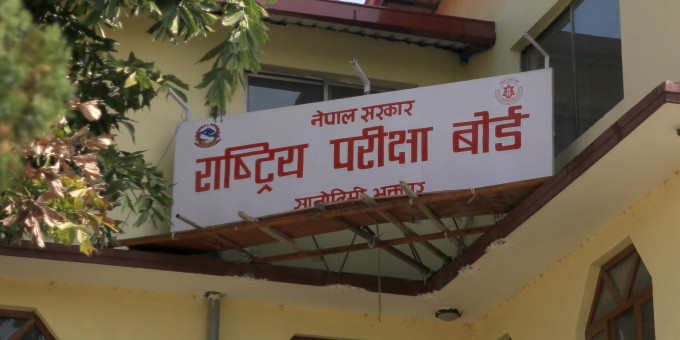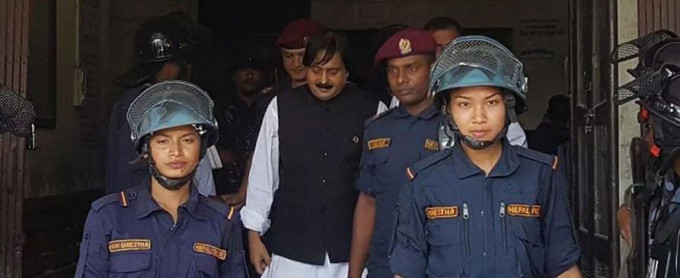Abortion, guns and religion — a major change in the law in any one of these areas would have made for a fateful Supreme Court term. In its first full term together, the court’s conservative majority ruled in all three and issued other significant decisions limiting the government’s regulatory powers.
And it has signaled no plans to slow down.
With former President Donald Trump’s appointees in their 50s, the six-justice conservative majority seems poised to keep control of the court for years to come, if not decades.
“This has been a revolutionary term in so many respects,” said Tara Leigh Grove, a law professor at the University of Texas. “The court has massively changed constitutional law in really big ways.”
Its remaining opinions issued, the court began its summer recess Thursday, and the justices will next return to the courtroom in October.
Overturning Roe v. Wade and ending a nearly half-century guarantee of abortion rights had the most immediate impact, shutting down or severely restricting abortions in roughly a dozen states within days of the decision.
In expanding gun rights and finding religious discrimination in two cases, the justices also made it harder to sustain gun control laws and lowered barriers to religion in public life.
Setting important new limits on regulatory authority, they reined in the government’s ability to fight climate change and blocked a Biden administration effort to get workers at large companies vaccinated against COVID-19.
The remarkable week at the end of June in which the guns, abortion, religion and environmental cases were decided at least partially obscured other notable events, some of them troubling.
New Justice Ketanji Brown Jackson was sworn in Thursday as the first Black woman on the court. She replaced the retiring Justice Stephen Breyer, who served nearly 28 years, a switch that won’t change the balance between liberals and conservatives on the court.
In early May, the court had to deal with the unprecedented leak of a draft opinion in the abortion case. Chief Justice John Roberts almost immediately ordered an investigation, about which the court has been mum ever since. Soon after, workers encircled the court with 8-foot-high fencing in response to security concerns. In June, police made a late-night arrest of an armed man near Justice Brett Kavanaugh’s Maryland home, and charged him with attempted murder of the justice.
Kavanaugh is one of three Trump appointees along with Justices Neil Gorsuch and Amy Coney Barrett who fortified the right side of the court. Greg Garre, who served as President George W. Bush’s top Supreme Court lawyer, said when the court began its term in October “the biggest question was not so much which direction the court was headed in, but how fast it was going. The term answers that question pretty resoundingly, which is fast.”
The speed also revealed that the chief justice no longer has the control over the court he held when he was one of five, not six, conservatives, Garre said.
Roberts, who favors a more incremental approach that might bolster perceptions of the court as a nonpolitical institution, broke most notably with the other conservatives in the abortion case, writing that it was unnecessary to overturn Roe, which he called a “serious jolt” to the legal system. On the other hand, he was part of every other ideologically divided majority.
If the past year revealed limits on the chief justice’s influence, it also showcased the sway of Justice Clarence Thomas, the longest-serving member of the court. He wrote the decision expanding gun rights and the abortion case marked the culmination of his 30-year effort on the Supreme Court to get rid of Roe, which had stood since 1973.
Abortion is just one of several areas in which Thomas is prepared to jettison court precedents. The justices interred a second of their decisions, Lemon v. Kurtzman, in ruling for a high school football coach’s right pray on the 50-yard line following games. It’s not clear, though, that other justices are as comfortable as Thomas in overturning past decisions.
The abortion and guns cases also seemed contradictory to some critics in that the court handed states authority over the most personal decisions, but limited state power in regulating guns. One distinction the majorities in those cases drew, though, is that the Constitution explicitly mentions guns, but not abortion.
Those decisions do not seem especially popular with the public, according to opinion polls. Polls show a sharp drop in the court’s approval rating and in people’s confidence in the court as an institution.
Justices on courts past have acknowledged a concern about public perception. As recently as last September, Justice Amy Coney Barrett said, “My goal today is to convince you that this court is not comprised of a bunch of partisan hacks.” Barrett spoke in at a center named for Senate Republican leader Mitch McConnell of Kentucky, who engineered her rapid confirmation in 2020 and was sitting on the stage near the justice.
But the conservatives, minus Roberts, rejected any concern about perception in the abortion case, said Grove, the University of Texas professor.
Justice Samuel Alito wrote in his majority opinion that “not only are we not going to focus on that, we should not focus on that,” she said. “I’m sympathetic as an academic, but I was surprised to see that coming from that many real-world justices.”
The liberal justices, though, wrote repeatedly that the court’s aggressiveness in this epic term was doing damage to the institution. Justice Sonia Sotomayor described her fellow justices as “a restless and newly constituted Court.” Justice Elena Kagan, in her abortion dissent, wrote: “The Court reverses course today for one reason and one reason only: because the composition of this Court has changed.”
In 18 decisions, at least five conservative justices joined to form a majority and all three liberals were in dissent, roughly 30% of all the cases the court heard in its term that began last October.
Among these, the court also:
— Made it harder for people to sue state and federal authorities for violations of constitutional rights.
— Raised the bar for defendants asserting their rights were violated, ruling against a Michigan man who was shackled at trial.
— Limited how some death row inmates and others sentenced to lengthy prison terms can pursue claims that their lawyers did a poor job representing them.
In emergency appeals, also called the court’s “shadow” docket because the justices often provide little or no explanation for their actions, the conservatives ordered the use of congressional districts for this year’s elections in Alabama and Louisiana even though lower federal courts have found they likely violated the federal Voting Rights Act by diluting the power of Black voters.
The justices will hear arguments in the Alabama case in October, among several high-profile cases involving race or elections, or both.
Also when the justices resume hearing arguments the use of race as a factor in college admissions is on the table, just six years after the court reaffirmed its permissibility. And the court will consider a controversial Republican-led appeal that would vastly increase the power of state lawmakers over federal elections, at the expense of state courts.
These and cases on the intersection of LGBTQ and religious rights and another major environmental case involving development and water pollution also are likely to result in ideologically split decisions.
Khiara Bridges, a professor at the University of California, Berkeley, law school, drew a link between the voting rights and abortion cases. In the latter, Alito wrote in Dobbs v. Jackson Women’s Health Organization that abortion should be decided by elected officials, not judges.
“I find it to be incredibly disingenuous for Alito to suggest that all that Dobbs is doing is returning this question to the states and that people can battle in the state about whether to protect fetal life or the interest of the pregnant person,” Bridges said. “But that same court is actively involved in insuring that states can disenfranchise people.”
Bridges also said the outcomes aligned almost perfectly with the political aims of Republicans. “Whatever the Republican party wants, the Republican party is going to get out of the currently constituted court,” she said.
Defenders of the court’s decisions said the criticism misses the mark because it confuses policy with law. “Supreme Court decisions are often not about what the policy should be, but rather about who (or which level of government, or which institution) should make the policy,” Princeton University political scientist Robert George wrote on Twitter.
For now, there is no sign that either the justices or Republican and conservative interests that have brought so many of the high-profile cases to the court intend to trim their sails, Grove said.
That’s in part because there’s no realistic prospect of court reforms that would limit the cases the justices could hear, impose term limits or increase the size of the Supreme Court, said Grove, who served on President Joe Biden’s bipartisan Supreme Court commission on court reforms.
READ ALSO:










